#evening in paris
Explore tagged Tumblr posts
Text

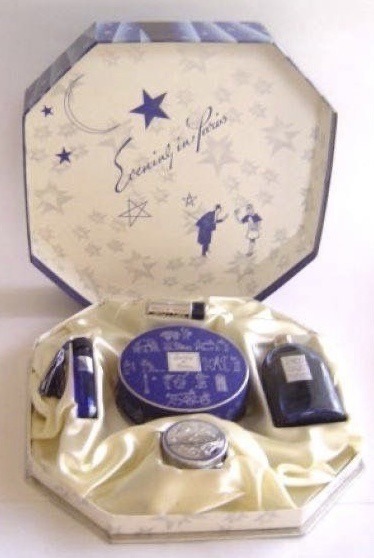
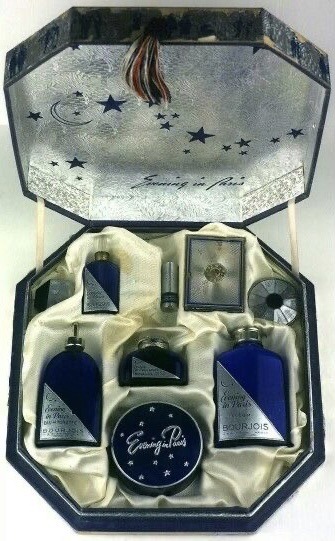
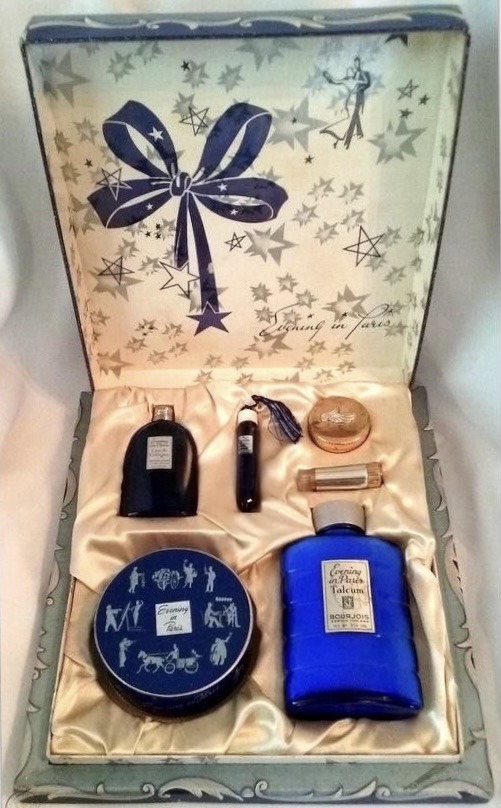
Evening in Paris by Bourjois gift sets.
271 notes
·
View notes
Text

1928 Evening In Paris - Cologne, Powder, Toilet Water, Cobalt Blue
9 notes
·
View notes
Text

2 notes
·
View notes
Text
Quincy Jones, Giant of American Music, Dies at 91
As a producer, he made the best-selling album of all time, Michael Jackson’s “Thriller.” He was also a prolific arranger and composer of film music.








By Ben Ratliff Nov. 4, 2024
Quincy Jones, one of the most powerful forces in American popular music for more than half a century, died on Sunday night in his home in the Bel Air section of Los Angeles. He was 91.
His death was confirmed in a statement by his publicist, Arnold Robinson, who did not specify the cause.
Mr. Jones began his career as a jazz trumpeter and was later in great demand as an arranger, writing for the big bands of Count Basie and others; as a composer of film music; and as a record producer. But he may have made his most lasting mark by doing what some believe to be equally important in the ground-level history of an art form: the work of connecting.
Beyond his hands-on work with score paper, he organized, charmed, persuaded, hired and validated. Starting in the late 1950s, he took social and professional mobility to a new level in Black popular art, eventually creating the conditions for a great deal of music to flow between styles, outlets and markets. And all of that could be said of him even if he had not produced Michael Jackson’s “Thriller,” the best-selling album of all time.
Mr. Jones’s music has been sampled and reused hundreds of times, through all stages of hip-hop and for the theme to the “Austin Powers” films (his “Soul Bossa Nova,” from 1962). He has the third-highest total of Grammy Awards won by a single person — he was nominated 80 times and won 28. (Beyoncé’s 32 wins is the highest total; Georg Solti is second with 31.) He was given honorary degrees by Harvard, Princeton, Juilliard, the New England Conservatory, the Berklee School of Music and many other institutions, as well as a National Medal of Arts and a National Endowment for the Arts Jazz Master fellowship.
His success — as his colleague in arranging, Benny Carter, is said to have remarked — may have overshadowed his talent.

Mr. Jones at his induction into the Rock and Roll Hall of Fame in 2013 in Los Angeles.Credit...Danny Moloshok/Invision, via Associated Press.
In the late 1950s and early ’60s, Mr. Jones led his own bands and was the arranger of plush, confident recordings like Dinah Washington’s “The Swingin’ Miss ‘D’” (1957), Betty Carter’s “Meet Betty Carter and Ray Bryant” (1955), and Ray Charles’s “Genius + Soul = Jazz” (1961). He arranged and conducted several collaborations between Frank Sinatra and Count Basie, including what is widely regarded as one of Sinatra’s greatest records, “Sinatra at the Sands” (1966).
He composed the soundtracks to “The Pawnbroker” (1964), “In Cold Blood” (1967) and “The Color Purple” (1985), among many other movies; his film and television work expertly mixed 20th-century classical, jazz, funk and Afro-Cuban, street, studio and conservatory. And the three albums he produced for Michael Jackson between 1979 and 1987 — “Off the Wall,” “Thriller” and “Bad” — arguably remade the pop business with their success, by appealing profoundly to both Black and white audiences at a time when mainstream radio playlists were becoming increasingly segregated.
At 11, a Pivotal ‘Whisper’
Quincy Delight Jones Jr. was born on the South Side of Chicago on March 14, 1933, to Quincy Sr. — a carpenter who worked for local gangsters — and Sarah (Wells) Jones, a musically talented Boston University graduate. At one point in the late 1930s, Quincy and his brother, Lloyd, were separated from their mother, who had developed a schizophrenic disorder, and taken by their father to Louisville, Ky., where they were put in the care of their maternal grandmother, a former enslaved worker.
By 1943, Quincy Sr. had moved with his sons to Bremerton, Wash., where he found work in the Puget Sound Naval Shipyard. They were eventually joined by his second wife, Elvera, and her three children, and four years later the family moved to Seattle. Once there, Quincy Sr. and Elvera had three more children; of the eight, Quincy Jr. and Lloyd perceived themselves to be the least favored by their stepmother and were often left to fend for themselves.
But the young Quincy was hungry to learn, and eventually to leave. At 11, he and his brother broke into a recreation center looking for food; there was a spinet piano in a supervisor’s room in the back, and as he later told the story in the BBC documentary “The Many Lives of Q” (2008), “God’s whispers” made him move toward it and touch it.
He went on to join his school band and choir, learning several brass, reed and percussion instruments, and music became his focus.
At 13, he persuaded the trumpeter Clark Terry, who was in Seattle for a month while touring with Count Basie’s band, to give him lessons after the band’s late set and before his school day began.
At 14, he met the 16-year-old Ray Charles, then known as R.C. Robinson, who had come west from Florida; they became close, and both worked for Bumps Blackwell, a local bandleader. At 15, Quincy gave Lionel Hampton an original composition and was hired for his touring band on the spot, only to be dismissed the next day by Hampton’s wife and manager, Gladys; she admonished him to go back to school.
After graduating from Garfield High School in Seattle, he attended Seattle University for one semester, then accepted a scholarship to attend the Schillinger House in Boston, now known as Berklee College of Music.
In 1951, Hampton’s band came calling again. This time, Mr. Jones joined and stayed for two years, as a trumpeter and occasional arranger. He wrote music quickly — including his first complete and credited composition, “Kingfish”— and got it sounding good quickly, through preternatural skills of charm and organization.

Mr. Jones circa 1974.Credit...A&M Records/ Michael Ochs Archives, via Getty Images.
During that time he settled down with his high school girlfriend, Jeri Caldwell, and had a daughter, Jolie, in 1952, although the couple did not marry until 1957. (She was white, and the early days of their relationship and child-rearing met much disapproval. It was the first of Mr. Jones’s three marriages, all interracial.
By the end of 1953, still only 20 and with a young daughter, he left Hampton’s band to settle in New York and work as a freelance arranger for Count Basie and the saxophonist James Moody, among others.
Mr. Jones’s true education was only beginning. In 1956, he was hired as musical director, arranger and trumpeter in the trumpeter Dizzy Gillespie’s band, which traveled under the auspices of the State Department for three months through Europe and the Middle East and then took a second trip to South America.
Mr. Jones recorded the first album under his own name, “This Is How I Feel About Jazz,” in 1956. A year later, he moved to Paris to work for Barclay Records and stayed in Europe on and off for five years as the label’s staff arranger and conductor. He took advantage of the opportunity to write for strings — because, in his view, a Black arranger was much less likely to be given the chance to do so in America — and studied music theory with Nadia Boulanger.
In 1958, Mr. Jones signed with Mercury Records. For his albums “The Birth of a Band!” and “The Great Wide World of Quincy Jones,” both released in 1959, he assembled a big band including Mr. Terry and other first-tier jazz musicians. Mr. Jones’s vision for this band grew out of the tight and smooth sound world of the 1950s Count Basie Orchestra.
Offered the job of assembling a jazz band to lead the orchestra in a musical — “Free and Easy,” about the post-abolition South, based on the work of the Black American writers Arna Bontemps and Countee Cullen and with a score by Harold Arlen and Johnny Mercer — Mr. Jones used many of the players from his working ensemble. The idea, as he explained in “Q,” his 2001 memoir, was for the group to “work the kinks out of the show” in Europe before it moved on to London and, potentially, Broadway.
Hobbled by a problematic script and an 11th-hour change in director, “Free and Easy” opened at the Alhambra Theater in Paris in January 1960 and closed within a few weeks.
Turning to Pop
Wanting to keep his band together at all costs, Mr. Jones kept 30 people on the payroll and assembled concerts around Europe for 10 months; deep in debt at the end of the tour, he sold publishing rights for half of his songs to get his retinue home. (He would later buy back those rights at a much higher price.)
Back in New York, the band dissolved, as did Mr. Jones’s first marriage — although, given his acknowledged chronic infidelity, that might have been some time coming. “It got so out of control,” he wrote in his memoir, “that at one point I was in love with and dating Marpessa Dawn, the leading lovely from ‘Black Orpheus’; a Chinese beauty; a French actress; Hazel Scott, the gifted, cosmopolitan ex-wife of Adam Clayton Powell Jr.; and Juliette Gréco, the Queen of French Existentialism, all at the same time.”
Mr. Jones took the job of musical director at Mercury in 1961, assembling its jazz roster: He signed Dizzy Gillespie, Gerry Mulligan, Shirley Horn and others. But this was a moment when pop was taking over; jazz’s margins, and perhaps its audience, too, were in steep decline.
He changed his focus accordingly. His first pop success was with the singer Lesley Gore, who was only 16 when he came into possession of her demo tape. “She had a mellow, distinctive voice and sang in tune, which a lot of grown-up rock ’n’ roll singers couldn’t do, so I signed her,” Mr. Jones wrote. He helped make the song “It’s My Party” (1963) into a No. 1 hit for Ms. Gore, rushing acetates to radio stations just before another version of the song, sung by the Crystals and produced by Phil Spector, which remains unreleased.
Mr. Jones ascended at Mercury, in 1964 becoming the first Black vice president of a white-owned record label. (He also won his first Grammy Award that year, for his arrangement of Count Basie’s “I Can’t Stop Loving You.”) He kept the position for less than a year, until he scored “The Pawnbroker” — one of his greatest achievements as a composer — and moved to Los Angeles to work in films and television.
His most frenetic years, professionally and personally, began in the late 1960s and stretched to 1974. He married Ulla Andersson, a 19-year-old Swedish model, in 1967 and had two children with her, Martina and Quincy III; they divorced in 1974. His dozens of film-score credits in those years included “The Deadly Affair,” “In the Heat of the Night,” “In Cold Blood,” “Mirage,” “For Love of Ivy” and “The Getaway.” And he composed theme songs and scored episodes for “Sanford and Son,” “Ironside” and two different shows starring Bill Cosby. He also produced the 1973 television tribute “Duke Ellington … We Love You Madly.”

Mr. Jones with Duke Ellington, seated, during a recording session in 1973.Credit...David Redfern/Redferns, via Getty Images.
At the same time, Mr. Jones was making large-ensemble jazz-funk records as a leader, including “Walking in Space” (1969), whose title track won a Grammy for best instrumental jazz performance by a large group. He soon moved toward a more purely commercial kind of funk and R&B with “Body Heat” (1974).
He was working on “Mellow Madness,” a follow-up to “Body Heat,” when he suffered a brain aneurysm in 1974, resulting in two operations. After the first, his friends, not expecting him to live, organized a memorial concert at the Shrine Auditorium in Los Angeles. The concert went on as planned, with a roster that included Cannonball Adderley, Sarah Vaughan and Ray Charles. Mr. Jones attended, under strict orders from his neurosurgeon not to get excited.
“It felt like I was watching my own funeral,” he later wrote.
For a few years Mr. Jones slowed down, comparatively. He married the actress Peggy Lipton and had two daughters with her: Kidada Jones, an actress, model and fashion designer, and the film and television actress Rashida Jones.
He produced hit records by the Brothers Johnson, who had sung on “Mellow Madness”; contributed music to the celebrated mini-series “Roots” in 1977; and in 1978 served as musical supervisor for Sidney Lumet’s film version of the Broadway musical “The Wiz,” working with Michael Jackson for the first time. That led to their collaborations on the albums “Off the Wall,” “Thriller” and “Bad,” whose combined certified American unit-sales amount to 46 million, and whose worldwide figures are said to be more than double that.
As a joint venture with Warner Bros. Records, Mr. Jones started his own label, Qwest, in 1980. The label’s first release was the singer and guitarist George Benson’s “Give Me the Night,” which won three Grammys; otherwise, its quirky discography — the list includes not just stars like Frank Sinatra, Lena Horne and the R&B singer James Ingram, but also the post-punk band New Order, the gospel singer Andraé Crouch and the experimental jazz saxophonist Sonny Simmons — proved, if it needed proving, that Mr. Jones was not concerned only with the bottom line.

Clockwise from left, Lionel Richie, Daryl Hall, Mr. Jones, Paul Simon and Stevie Wonder recording “We Are The World” in 1985.Credit...Associated Press.
His profile was raised even higher in 1985, when he produced, arranged and conducted a supergroup of more than 40 singers — including Diana Ross, Michael Jackson, Bruce Springsteen and Stevie Wonder — under the banner name USA for Africa, in “We Are the World,” a fund-raising single for famine relief.
The recording, with an accompanying video, was an international hit, becoming the industry’s first multiplatinum release, raising millions of dollars in donations and winning four Grammys, including “Song of the Year.” (The making of that record was the subject of a 2024 Netflix documentary, “The Greatest Night in Pop.”)
Shortly after that, Mr. Jones served as associate producer of Steven Spielberg’s film adaptation of Alice Walker’s novel “The Color Purple.” He also wrote the score, in less than two months.
To Tahiti and Back
Meanwhile, Mr. Jones’s third marriage failed, he became dependent on the sleeping pill Halcion, and he was not making good on plans for a follow-up to “Bad.” In 1986, he fled to one of Marlon Brando’s vacation spots — “a cluster of islands he’d owned in Tahiti since filming ‘Mutiny on the Bounty,’” as he described it in “Q.” He spent a month recovering, overcame his Halcion addiction and bounced back.
The 1989 album “Back on the Block” served as his official return, with a guest roster that typified his cross-generational, cross-stylistic dream of Black American music: Ella Fitzgerald, Miles Davis, Ice-T, Luther Vandross, Barry White. The album won six Grammys, including album of the year, and Mr. Jones was named nonclassical producer of the year.
The documentary feature “Listen Up: The Lives of Quincy Jones,” which told his story through the recollections of his colleagues, was released in 1990. That same year, his record label became part of a larger multimedia entity, Quincy Jones Entertainment, which produced the sitcoms “The Fresh Prince of Bel Air” and “In the House” as well as the sketch show “Mad TV.” The business eventually branched out into publishing: He helped start the hip-hop magazine Vibe, and published Spin and Blaze with Robert Miller.

Mr. Jones with students at the Montreux Jazz Festival in 1991.Credit...Alain Benainous/Gamma-Rapho, via Getty Images
In 1991, Mr. Jones produced a concert at the Montreux Jazz Festival in Switzerland — of which he, in typical factotum spirit, had become a co-producer — reuniting Miles Davis with the arranger Gil Evans to play music from the albums “Sketches of Spain” and “Porgy and Bess.” It was there that he met the actress Nastassja Kinski, with whom he lived for four years, a union that produced his seventh child, Kenya Julia Miambi Sarah Jones, who became a model and is known professionally as Kenya Kinski-Jones.
By that time Mr. Jones’s life and work had become entwined with hip-hop, with or without his direct input. At his death in 1996, Tupac Shakur had sampled, for his own No. 1 hit “How Do U Want It,” a piece of Mr. Jones’s “Body Heat” — a track that has also been sampled by Das EFX, Mobb Deep and Tyrese, among others — and was dating Mr. Jones’s daughter Kidada.
According to his publicist, Mr. Jones is survived by a brother, Richard; two sisters, Margie Jay and Theresa Frank; and seven children: Jolie, Kidada, Kenya, Martina, Rachel, Rashida and Quincy III.
In his final decades, Mr. Jones dedicated much of his time to charity work through his Listen Up! Foundation; established a Quincy Jones professorship of African American music at Harvard University; produced “Keep On Keepin’ On,” a 2014 film about the teacher-student relationship between the 89-year-old Clark Terry, Mr. Jones’s old mentor, and Justin Kauflin, a young blind jazz pianist; and released the album “Soul Bossa Nostra,” reprising songs he’d produced in the past, with appearances by Snoop Dogg, T-Pain and Amy Winehouse, who contributed a louche version of “It’s My Party” — her last commercial release before her death in 2011.
Mr. Jones stayed in the public eye. In 2018, he made headlines when he gave wide-ranging interviews to New York and GQ magazines that contained surprising comments about Michael Jackson and other subjects.
In 2017, he helped launch a video platform, Qwest TV, offering high-definition streams of jazz concerts and documentaries, and in 2022 he appeared on the album “Dawn FM” by the Weeknd, performing a monologue on the track “A Tale by Quincy.”
But even his not-fully-realized back-burner projects tell a story of their own, a kind of secondary biography of the obsessions and connections of a constantly busy man. Among them were a musical about Sammy Davis Jr.; a Cirque du Soleil show on the history of Black American music, from its African roots; a film about Brazilian carnivals; a film version of Ralph Ellison’s unfinished novel “Juneteenth”; and a film on the life of Alexander Pushkin, the Russian poet who was said to be of African origin.
#Obituary#Quincy Jones#Quincy Delight Jones Jr.#The New York Times#Evening in Paris#One Mint Julep#Soul Bossa Nova#It’s My Party#Fly Me to the Moon#The Pawnbroker: Main Title#Boobie Baby#The Streetbeater#Body Heat#Don’t Stop ’Til You Get Enough#Just Once#Billie Jean#We Are the World#I’ll Be Good to You
0 notes
Text
#i'll go first a boy i used to be on swim team with has competed in swimming Olympic trials#so i really don't know any Olympians#idk thinking about that made me curious#now go!#do we think even one tumblrina is also a secret elite jock?#tumblr polls#my polls#olympics#paris 2024#paris olympics#gymnastics#swimming#gansey-like
5K notes
·
View notes
Text

ractose intolerance 🧀
#mcyt#rats smp#ratssmp#rats in paris#inthelittlewood#rendog#poor lactose intolerant captain..#smp literally made to make my brain go brrr RATS RATS RATS#ok tomorrow im taking a literal break from constantly drawing rats.#even if its literally all my brain wants to do1!1
3K notes
·
View notes
Text




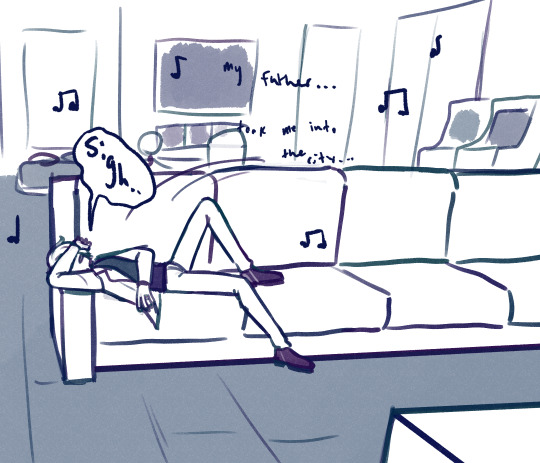





I'm so so obsessed with this absolute freak
#ml#miraculous ladybug#miraculous#ml paris special#ml paris#ml paris spoilers#ml spoilers#emodrien#badrien#adrien agreste#claw noir#griffe noire#my art#adrien forever king of ''literally becomes a Different person on transformation'' even across universes. good for him
20K notes
·
View notes
Text


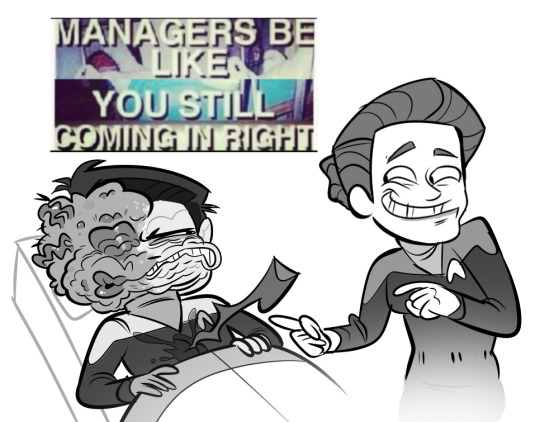





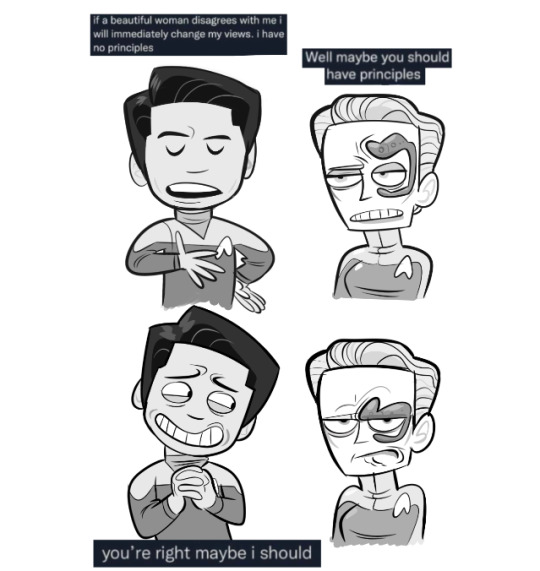


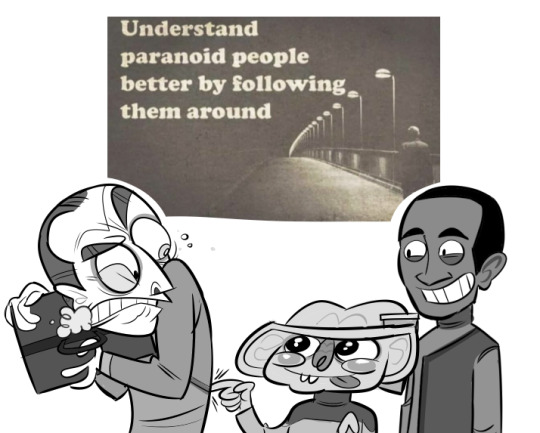

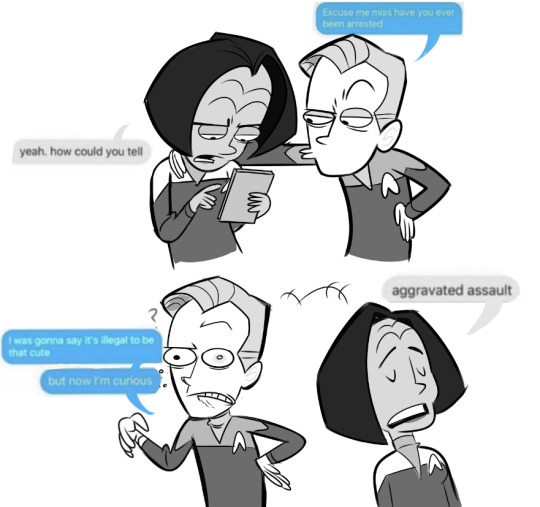

it's everyone's favorite holiday
SHITPOST DUMP AUGHHHHHHHHHHHHHHHHHHH
#should i even attempt to tag this#im gonna#voy#ds9#worf#ds9 jadzia#harry kim#tom paris#kathryn janeway#quark ds9#garak ds9#ezri dax#chakotay#kira nerys#odo ds9#nog ds9#jake sisko#sisko#tuvix#okay i think i got everyone
2K notes
·
View notes
Text
Okay, now that the ceremony is over and I have access to high quality stills, it's time for the most important question :
will I disguise myself as the masked Torchbearer or the badass Amored Rider lady for Halloween ?


#olympic games#olympic opening ceremony#paris 2024#paris olympics#2024 olympics#olympics#the torchbearer#torchbearer#flagbearer#the flagbearer#armored rider#does she even have a proper tag ?#olympic flag bearer
2K notes
·
View notes
Text
So many people complaining about the closing ceremonies have clearly never watched a closing ceremony before.
Dance party segment with a bunch of famous to the host country bands playing? NORMAL
Montage of the games showing winners and losers? NORMAL
Another historical/artistic segment that is usually hard to understand? NORMAL
Marathon winner getting their medal at the closing ceremony? NORMAL (though it being woman instead of men was a first!)
Crazy light show with flashing lights, fireworks ect. NORMAL
#people just complaining without even knowing why#this stuff isn't unique to this one#what is wrong with people this year?#even the cardboard beds aren't new#olympics#paris 2024#closing ceremony#olympics 2024
1K notes
·
View notes
Text
Evening in Paris (Bourjois)
An email from a dear old friend: Would I be at all interested in a bottle of Evening In Paris cologne, 1950's vintage? Would I!
What did I know about Evening In Paris? I knew it by sight, most definitely. Certain perfume bottles seem pre-encoded on feminine DNA: Shalimar, Chanel No. 5, Schiaparelli Shocking. Along with these, Evening in Paris' distinctive cobalt-and-silver bottle remains instantly recognizable as a ladies' dressing-table classic.
I also knew that it had been wildly popular among my great-grandmother's generation-- not only for its beauty, but for its reasonable price. In 1928, Bourjois (a cosmetics firm owned by Coco Chanel's business partner Pierre Wertheimer) hired Chanel No. 5 creator Ernest Beaux to design an inexpensive fragrance for the average American woman. No perfume brief ever proved more serendipitous, for the Great Crash soon wiped out all but the tiniest increments of expendable cash. All throughout the Depression and the subsequent World War, women found themselves constrained to pinch every penny and stretch every dime. Yet for under a dollar, one could walk into any Grant's or Woolworth's and leave with a bottle of "real French perfume"-- which, coincidentally, smelled like a million dollars.
So to recap: I was about to encounter a perfume billed for over 80 years as "The Most Popular Fragrance In the World", whose fans were legion and fiercely loyal, and whose scent -- for an entire generation -- symbolized feminine triumph over everyday adversity. The prospect of meeting this "grand old dame" filled me with ancipatory jitters. Would I like her? Would she like me?
The day it arrived, I studied the bottle carefully. A flat, lenticular glass phial three inches in height and midnight blue in color, with a pointy, fluted black hard plastic cap. One side of the phial bore traces of glue where a rectangular label (now missing) had been affixed at a diagonal. This confirmed it as a 1950's vintage, as Bourjois switched to a chevron-shaped label as of 1960. The bottle was nearly full of a clear amber liquid that appeared deep green viewed through the blue glass.
My friend had expressed concern that the fragrance might have diminished in potency over the years-- it seemed to fade from her skin awfully fast. This didn't worry me, as eaux de cologne typically contain only 2-5% perfume oil by volume, compared to the 15-20% of parfum.
But what if the issue was not one of persistence, but of damage? After five decades, had it remained true-- or would it have "turned"?
Here's where that cobalt blue bottle comes into play. In a clear glass bottle, alcohol (whether perfume or wine) tends to "cook"-- with tragic results. But in dark blue, amber, or green glass (or even better, opaque stone, as the ancients used for their alabastra) a perfume can remain sound for many years.
How do you test a vintage perfume to see if has survived the decades? Dab it on the back of your hand and wait ten minutes. Often, the initial whiff is sharp, sour, acetonic. Don't panic-- you're only smelling the volatile top notes, which exhibit the greatest tendency toward instability over time. Once these dissipate, you're left with the heart and base notes, which are composed of sterner stuff. The truly patient are rewarded with the soul of the perfume-- those sturdy and stable molecules responsible for all the ecstasy.
But it was no more over and done than a wedding is when the flower girls are finished strewing petals en route to the altar. The cheerful peals of the fairground organ faded away to a single, soft chord, and all the carnival colors melted into a single vision in white. Here at last was that honey-scented marvel-- the fabled linden flower, true soul of Evening In Paris.
This is precisely what I discovered when I opened Evening In Paris. A sparkling fountain of aldehydes rose up to meet me like a cheerful "Bonjour!" (Enchantée right back at you, ma'am.) On its heels came a veritable parade of notes dressed in bright harlequin colors-- a wonderful fiery bergamot, a fresh-mown clover so green I could taste it, a delicious dewy violet, and on and on. When jasmine showed up-- "sweet without sentiment, sweet without effeteness, sweet without compromise", as Tom Robbins once described it -- I made ready to applaud, to gather up my playbill and exit the theater...
The tree from which this wonder blossoms is known by a variety of names, all depending on where you happen to be standing. If in America, call it a basswood (after the "bast" or inner fiber of the bark). If in England, call it a lime (which -- along with linden -- stems from the Anglo-Saxon lenda, "yielding"). If in France, call it tilleul (after the genus Tiliaceae, from the IndoEuropean pteleia, "broad-leafed").
And if in Paris... call it magic.
When new-blown, the linden flower pervades the air with a heady fragrance that variously recalls raw honeycomb, chamomile, ozonic spring rain, and good Sauternes. Tilleul concrete (derived from the dried blossoms) adds a nose-tickling element of pollen dust and prosecco to the above. But rather than overpower, it introduces a surprising and unforgettable voile effect to floral perfumes, diffusing their overbright glisten like a sheer chiffon curtain in front of a sunny window.
According to herbal practitioners, a tea made of dried linden flowers acts as a gentle nervine calmative, providing swift relief from anxiety and insomnia. Evening In Paris' tilleul accord seems similarly, pleasantly narcotic. Remembering the lingering effect of the Joy spilled in my aunt's bedroom, I sprinkled a few drops of Evening in Paris on the surface of my bedside table and rubbed it into the wood with a soft cloth. Ever since, the sleepy languor invoked by its scent has made bedtime the haven it ought to be.
Scent Elements: Violet, bergamot, tilleul, clover, lilac, rose, jasmine, vetiver, styrax
By its aldehydic sparkle and powder-soft drydown, Evening in Paris (like Chanel No. 5) is recognizable as a classic Beaux creation. Both perfumes are flighty, romantic arrangements-- but where No. 5 employs a full symphony orchestra, Evening in Paris makes beautiful music with a modest chamber quartet. Though it may sound odd at first to modern ears attuned to newer keys, that melody is an undeniably lovely piece of nostalgia, full of memory and melancholy.
1 note
·
View note
Text






Some "Special" Girls! And the late girls.
Ko-fi | Patreon
#you don't even know how long I've held onto the Zoe one I made her with the quickness#I still haven't seen the Shanghai or New York Special I went in mostly blind on their looks#all the 'Specials' girls did get a redesign from me so the version where their mimicking their render pose is the redesign#though I kept Jess's hair wraps even though I don't love them#I know Native American people DO wrap their hair sometimes but I think it was to cop-out of animating her braids#my art#fashion#ml paris special#emonette#jess#aeon#new york special#fei#shanghai special#socqueline#zoe#socqueline wang#zoe lee#marinette#marinette dupain-cheng#ml art#miraculous ladybug
5K notes
·
View notes
Text

was not expecting this
#olympics#paris 2024#masked torchbearer#knight flagbearer#I don't know what to call them but they were very cool#and very unexpected#can't believe a sport thing got me to sketch something#what in the assassin's creed#I didn't even know the ceremony was on#I was just gonna eat some dinner and watch something while eating and timed it just when it started#and there I sat for 4 hours#go sports#they better be at the closing ceremony!
1K notes
·
View notes
Text
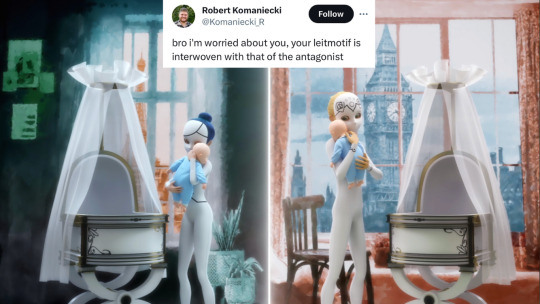
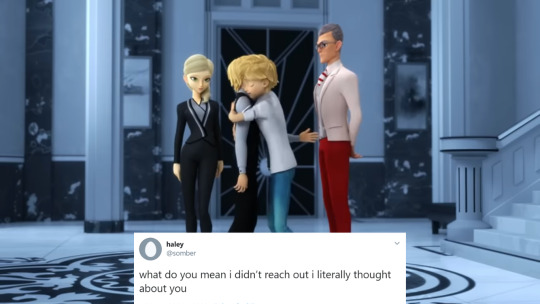

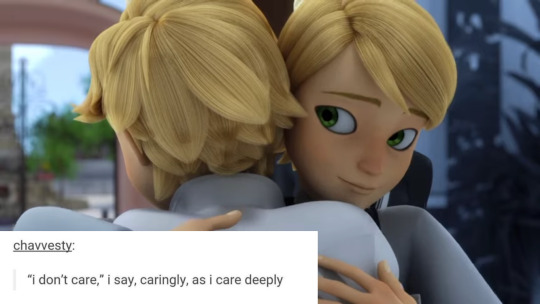

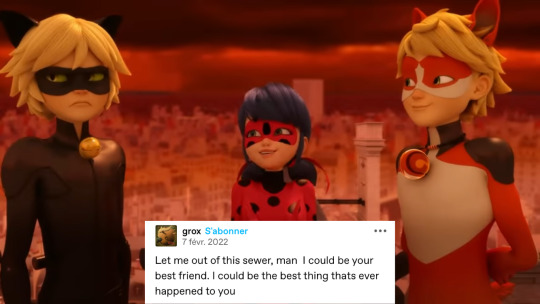


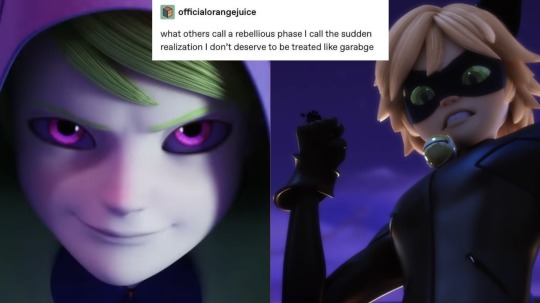
Senticousins textposts 💚🐈⬛💜🦚
+ Shadow Strike bonus under the cut:
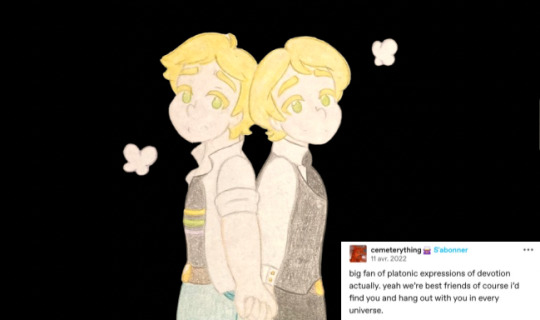
#Believe it or not I went into this intending to make Paris special textposts#But uh… I got distracted. Obviously.#Who is even surprised at this point?#These two need more content anyway. I’m doing the world a favour.#miraculous ladybug#adrien agreste#chat noir#felix graham de vanily#argos#flairmidable#senticousins#mlb spoilers#textposts#mlb textposts#nina’s textposts#shadow strike
3K notes
·
View notes
Text

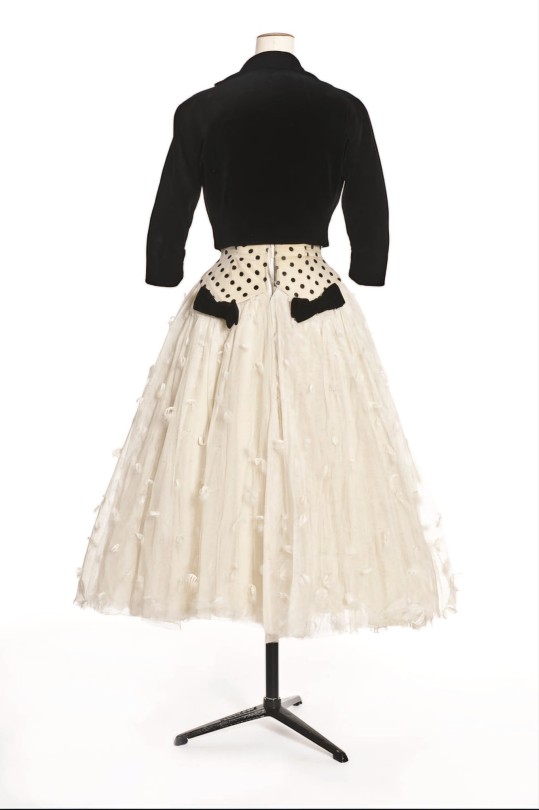


• Two Piece Set: Evening Dress and Bolero
Designer/Maker: Home Young Girls (Paris)
Date: 1954, Fall-Winter Collection (Haute Couture)
#fashion history#history of fashion#dress#fashion#vintage clothing#vintage fashion#vintage#vintage dress#1950's fashion#1950's dress#1950's#two piece set#evening dress#bolero#home young girls#paris#1954#fall/winter#haute couture
480 notes
·
View notes
